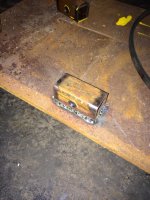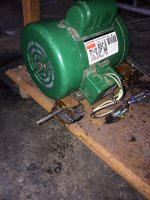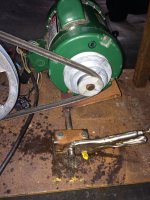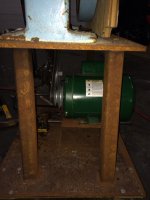jmc
Elite Member
- Joined
- Jul 21, 2003
- Messages
- 3,110
- Location
- SW Indiana
- Tractor
- Ford 1920 4x4 (traded in on Kubota). Case 480F TLB w/4 in 1 bucket, 4x4. Gehl CTL60 tracked loader, Kubota L4330 GST
Speed "sounds" about right. Good job.
Another way to calculate your surface feet/minute without calculating all of your gear reductions is to time (in minutes) how long it takes to hear, say 20 of the clicks caused by your blade defect. Then measure your blade length. Say it takes 1/3 minute for 20 revolutions of a 4 foot long blade, the surface feet/minute would be 80 feet in 1/3 minute which is 240 feet/min. Sorry if this was obvious.




